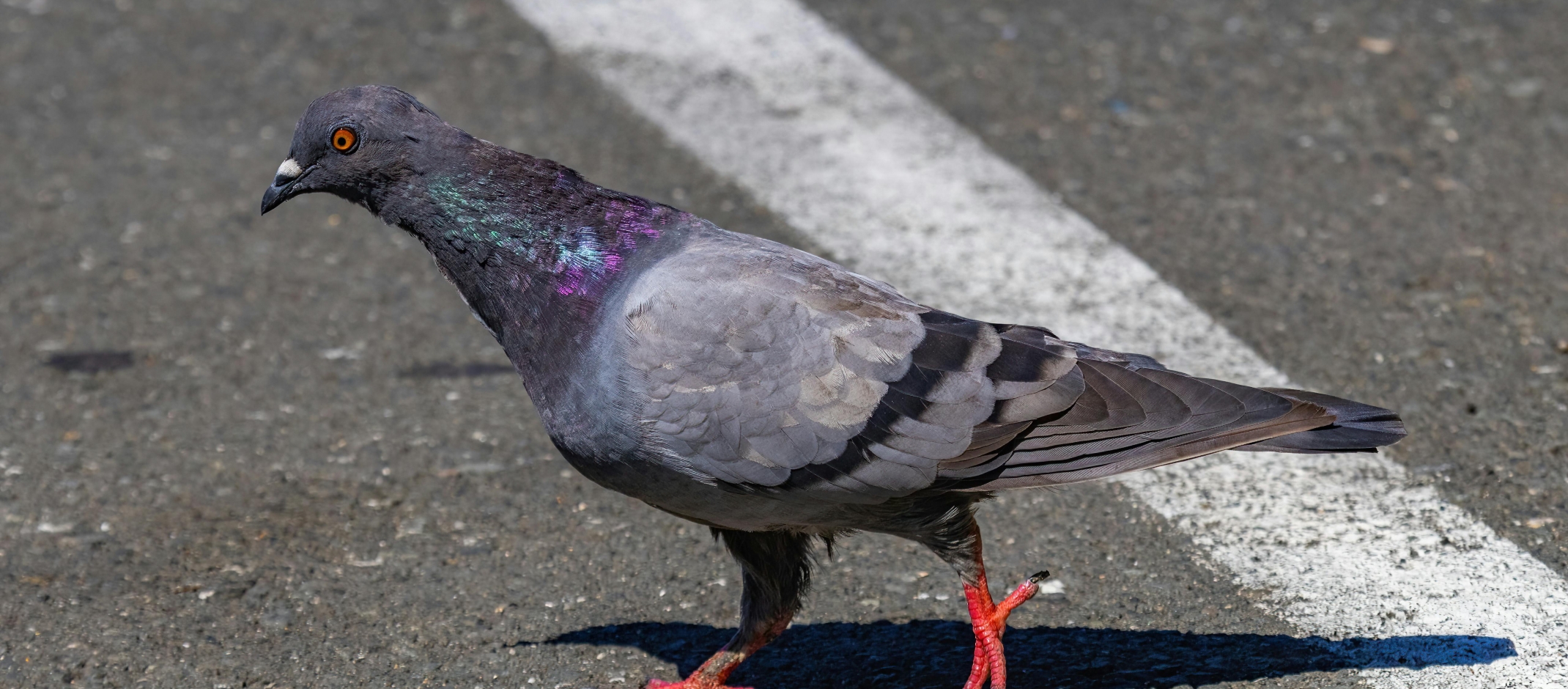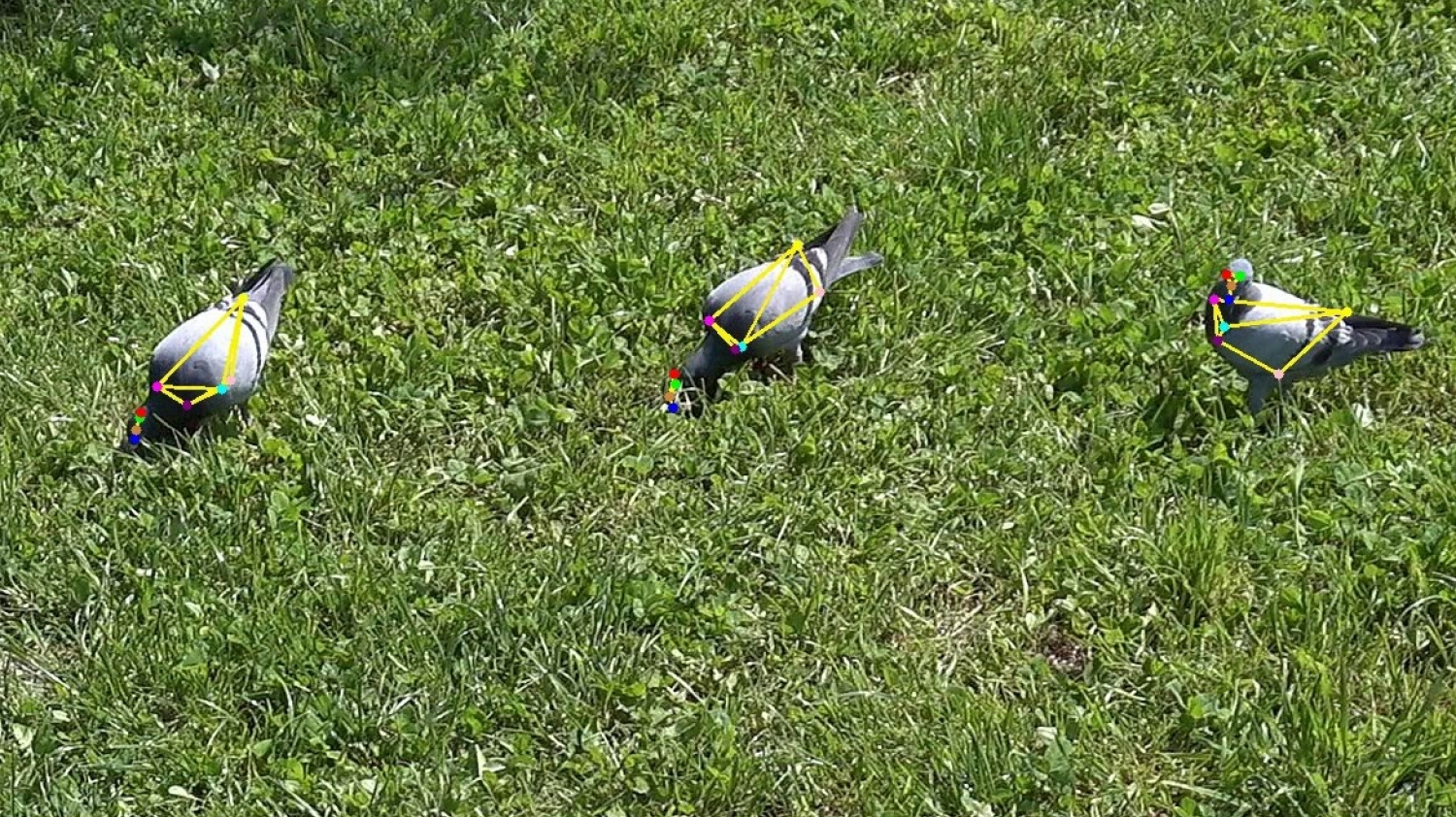Tracking animals without markers in the wild

Two pigeons are pecking grains in a park in Konstanz. A third pigeon flies in. There are four cameras in the immediate vicinity. Doctoral students Alex Chan and Urs Waldmann from the Cluster of Excellence Collective Behaviour at the University of Konstanz are filming the scene. After an hour, they return with the footage to their office to analyze it with a computer vision framework for posture estimation and identity tracking. The framework detects and draws a box around all pigeons. It records central body parts and determines their posture, their position, and their interaction with the other pigeons around them. All of this happened without any markers being attached to pigeons or any need for human being called in to help. This, would not have been possible just a few years ago.
© Alex Chan
3D-MuPPET, a framework to estimate and track 3D poses of up to 10 pigeons
Markerless methods for animal posture tracking have been rapidly developed recently, but frameworks and benchmarks for tracking large animal groups in 3D are still lacking. To overcome this gap, researchers from the Cluster of Excellence Collective Behaviour at the University of Konstanz and the Max Planck Institute of Animal Behaviour present 3D-MuPPET, a framework to estimate and track 3D poses of up to 10 pigeons at interactive speed using multiple camera views. The related publication was recently published in the International Journal of Computer Vision (IJCV). The article is part of a special issue on “Computer Vision Approaches for Animal Tracking and Modeling 2023” in IJCV.
The framework is based on the 3D-POP dataset and the I-MuPPET framework, developed by researchers in the Cluster of Excellence Collective Behaviour.
Important milestone in animal posture tracking and automatic behavioural analysis
Urs Waldmann and Alex Chan recently finalized a new method, called 3D-MuPPET, which stands for 3D Multi-Pigeon Pose Estimation and Tracking.
3D-MuPPET is a computer vision framework for posture estimation and identity tracking for up to 10 individual pigeons from 4 camera views, based on data collected both in captive environments and even in the wild. “We trained a 2D keypoint detector and triangulated points into 3D, and also show that models trained on single pigeon data work well with multi-pigeon data,” explains Urs Waldmann. This is a first example of 3D animal posture tracking for an entire group of up to 10 individuals. Thus, the new framework provides a concrete method for biologists to create experiments and measure animal posture for automatic behavioural analysis.
© Alex Chan
“This framework is an important milestone in animal posture tracking and automatic behavioural analysis."
Alex Chan and Urs Waldmann
Framework can be used in the wild
In addition to tracking pigeons indoors, the framework is also extended to pigeons in the wild. “Using a model that can identify the outline of any object in an image called the Segment Anything Model, we further trained a 2D keypoint detector with a masked pigeon from the captive data, then applied the model to pigeon videos outdoors without any extra model finetuning”, states Alex Chan. 3D-MuPPET presents one of the first case-studies on how to transition from tracking animals in captivity towards tracking animals in the wild, allowing fine-scaled behaviours of animals to be measured in their natural habitats. The developed methods can potentially be applied across other species in future work, with potential application for large scale collective behaviour research and species monitoring in a non-invasive way.
3D-MuPPET showcases a powerful and flexible framework for researchers who would like to use 3D posture reconstruction for multiple individuals to study collective behaviour in any environments or species. As long as a multi-camera setup and a 2D posture estimator is available, the framework can be applied to track 3D postures of any animals.
https://youtu.be/GZZ_u53UpfQ?feature=shared


